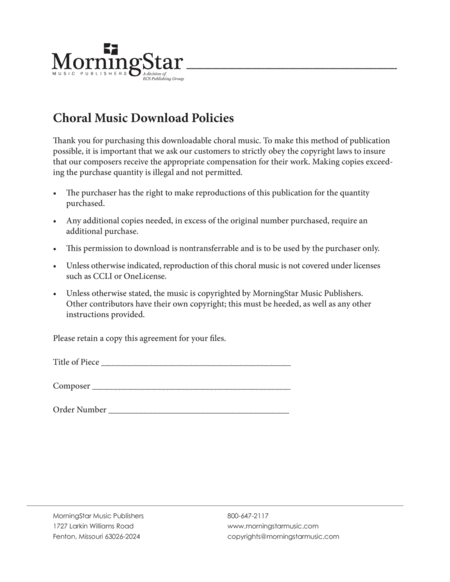Congregation, SATB choir, and organ, with optional brass sextet and percussion - Moderately Easy - Digital Download SKU: MQ.60-6450-E Composed by Michael D. Costello. Reformation, 21st Century. Instrument parts. 16 pages. MorningStar Music Publishers - Digital Sheet Music #60-6450-E. Published by MorningStar Music Publishers - Digital Sheet Music (MQ.60-6450-E). UPC: 688670664502. English.This concertato setting was commissioned in celebration of the 500th anniversary of the Reformation. The setting features a sprightly and majestic brass and organ introduction with a recurring theme that appears several times throughout the piece. The choral stanza captures the mood of the text. The piece is available in both an isometric version as well as a rhythmic version. Instrumental parts include: Brass Sextet (Two Trumpets in B-flat or C, Horn in F, Two Trombones, and Tuba), Percussion (Timpani, Chimes, Suspended Cymbals, and Crash Cymbals).
